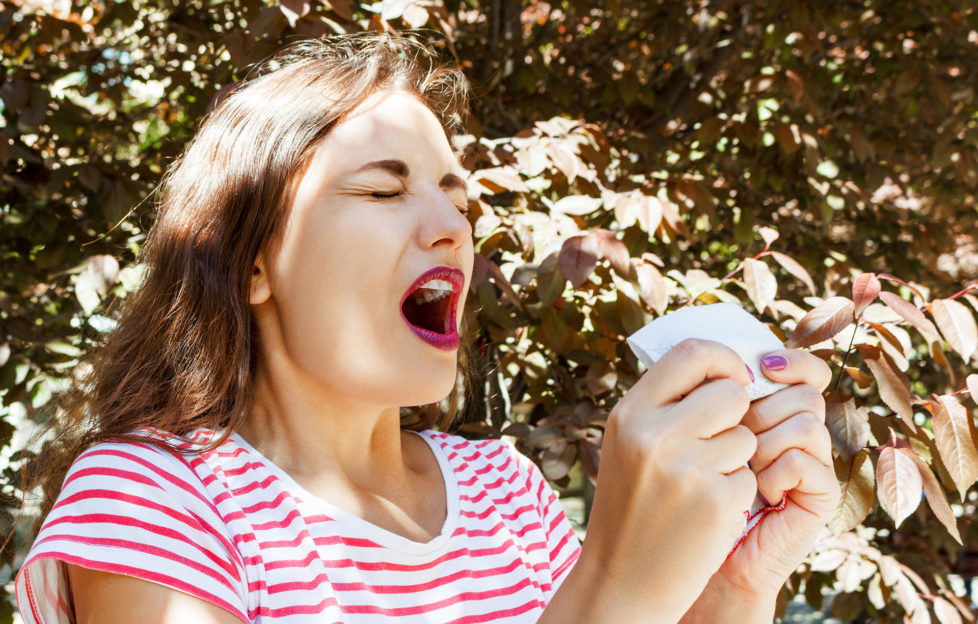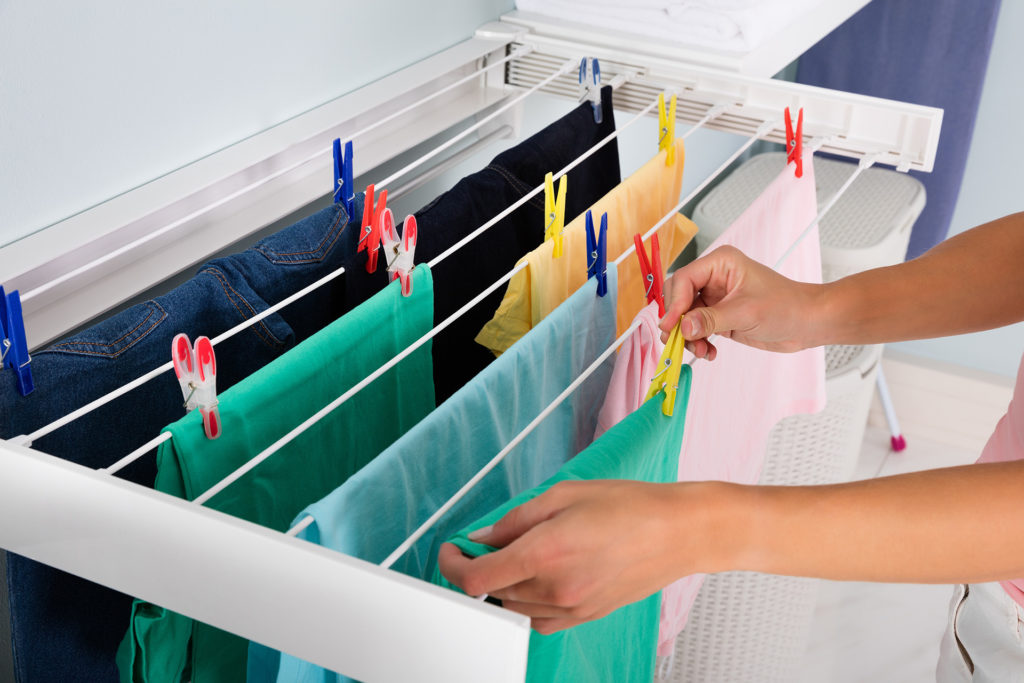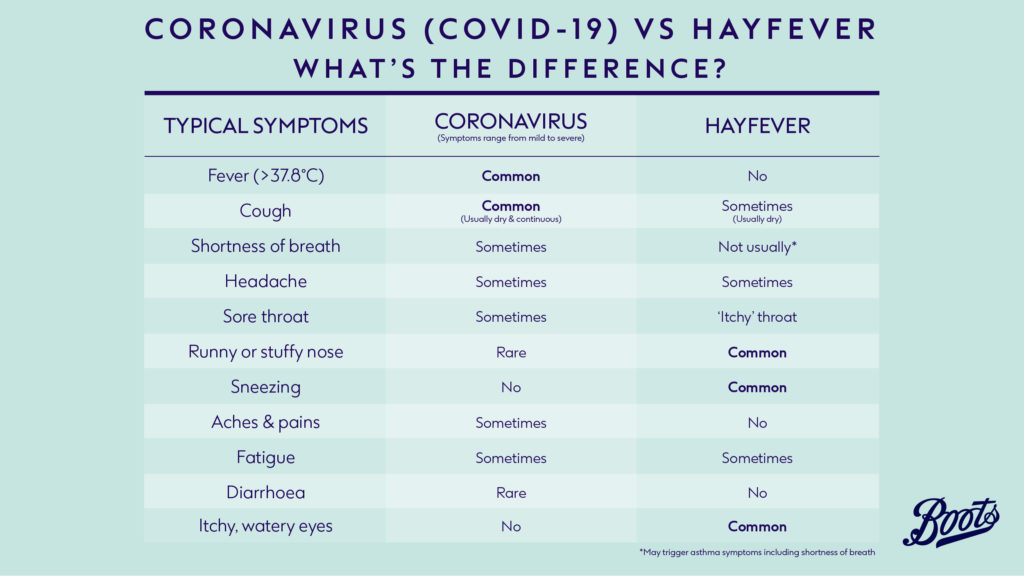Is It Hayfever Or Coronavirus?

With pollen levels set to increase this month, hayfever sufferers will begin to face the sniffles and now more than ever it’s important to know the difference between common hayfever symptoms and those that could be a sign of Coronavirus, so you can take the right steps to feeling better.
Boots Chief Pharmacist Marc Donovan shares his advice on knowing the difference between hayfever and Coronavirus and provides his top tips on how to how to manage your hayfever symptoms, so you can make the most of being out in your garden or getting your daily dose of exercise this Spring.
“Hayfever symptoms are different to Coronavirus. The most common symptoms of Coronavirus are a high temperature and/or a new continuous cough. Sneezing is not a symptom of Coronavirus and it’s rare to have a runny or stuffy nose. Hayfever doesn’t cause a high temperature and most people don’t feel unwell. Typical hayfever symptoms include sneezing, a runny or blocked nose, itchy red watery eyes or an itchy throat, mouth, nose and ears. Here are my top tips to help ease hayfever symptoms:
- First up, daily prevention –
- Try applying Vaseline to the inside of your nose, it works as a barrier and can trap pollen before breathing it in.
- An allergy barrier nasal spray is great for deterring pollen too. To really feel the benefit, try using it for two weeks before your symptoms usually begin.
- When you’re in and out of the garden, wear wraparound sunglasses to help prevent pollen from getting in and irritating your eyes.
- After spending time outdoors, try and make time to have a shower to wash away any stray pollen on your hair and skin, and put all clothes straight in the wash.
- Avoid hanging your washing outside as the pollen in the air can cling to your clean clothes and linger on the materials.
- The Met Office is your friend – Keep your eye on the Met Office website daily so you can monitor the pollen forecast, you can now also opt in to receive handy push notifications via the app.
Try, try and try again
There are lots of hayfever relief products out there, so if one type of medication isn’t working for you, consider swapping to another. If you’re looking for help choosing, your local Boots pharmacy team will be able to suggest alternatives. This is as long as you don’t have symptoms of the coronavirus. If you or anyone in your household has a temperature and/or a new continuous cough please stay at home even if it is mild. If you do come into store remember to stay 2 meters, which is about 3 steps, away from people.
- Timing is key – Certain times of day have higher pollen levels, typically the first half of the morning and later in the afternoon and evening, so taking a one-a-day allergy relief tablet in the morning will help protect you when you need it most. Around midday is a time where pollen count is at its lowest, so take this opportunity to pop out to the garden for some fresh air and to perhaps eat lunch, this will also help you get a healthy dose of Vitamin D.







